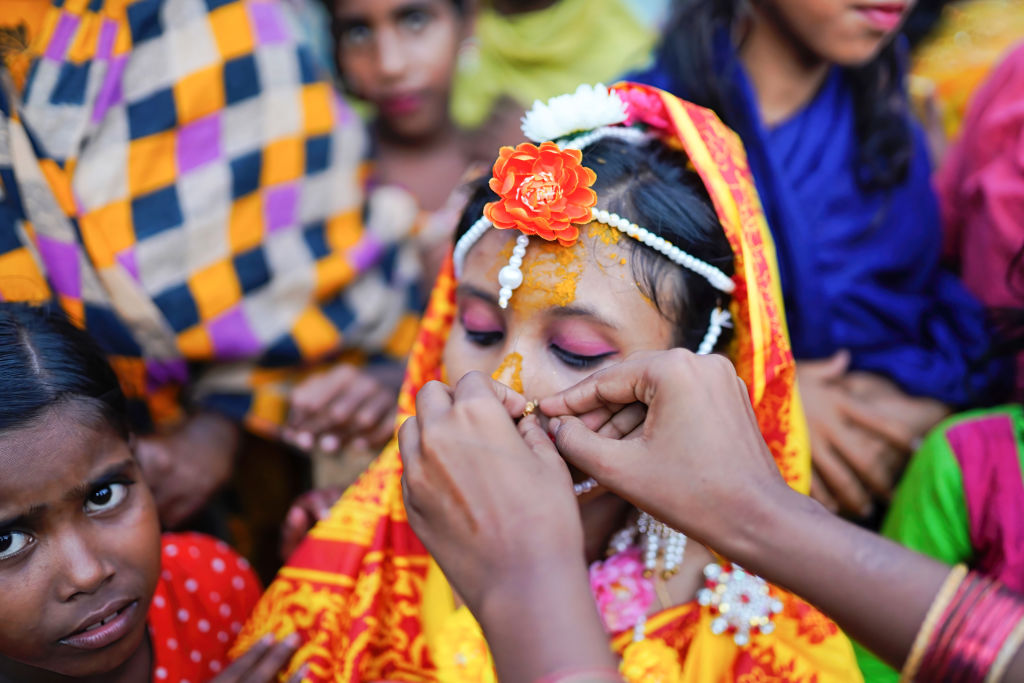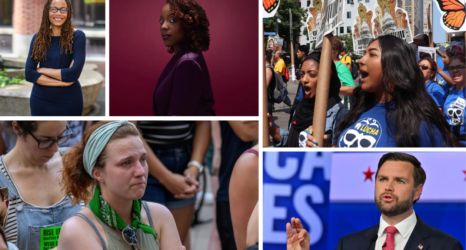COVID-19, climate change and food insecurity have only compounded child marriage. If we don’t act fast, we leave millions of girls at risk.

Globally, more than one in five girls are married before their 18th birthday—that’s one young girl married every three seconds.
Girls like Salamatou of Côte d’Ivoire. When she was just 13, Salamatou was forced to marry a man four times her age. Like so many child brides, Salamatou was physically and emotionally abused. She could not read or write, and her husband prevented her from going to school. By age 20, she had five children with her 60-year-old husband. In her words, she “had no life and no future.”
Despite an increase in the number of laws prohibiting child marriage around the world, stories like Salamatou’s are heartbreakingly common. Girls are forced into marriage almost everywhere, including in wealthier countries. But the numbers are even more alarming in poorer parts of the world. In the lowest-income countries, 40 percent of girls are married before they turn 18, and 12 percent are married before age 15.
Child marriage is driven by extreme poverty, which forces millions of parents to make impossible choices. Far too often, parents marry off their daughters because they do not have the resources to take care of them—especially when crises hit. A recent CARE survey on the state of Afghanistan showed a spike in early and forced child marriages across the country because cash-strapped families were unable to feed all their children since the Taliban takeover last year. UNICEF has estimated that 10 million more girls will be forced into marriage over the next decade because of the COVID-19 pandemic.
A recent survey on Afghanistan showed a spike in early and forced child marriages across the country because cash-strapped families were unable to feed all their children since the Taliban takeover last year.
The impact on these young girls is hard to overstate. Child brides lose control over their lives and futures. They must be sexually available whenever and however their husbands choose. They become pregnant in adolescence and are at substantial risk for complications in pregnancy and childbirth. They are prevented from attending or are unable to continue school. Their children grow up in poverty, and their daughters are more likely to be victims of forced child marriage themselves.
Very few girls are able to break this cycle, but Salamatou’s story proves it is possible. A few years ago, Salamatou joined a CARE community micro-savings program. Salamatou used her first $2 loan to buy salt. She paid it back within two weeks, took out another loan and bought more. Her business grew steadily, and today she is a successful salt wholesaler. Because of the financial independence she has gained, Salamatou’s daughters will never be forced to marry. And Salamatou has gone on to help thousands of other girls and women join savings groups—sharing her own path to independence and opportunity with so many others.
Every person should have the freedom to choose for themselves who they will marry and when. We’ve both benefited from this in our lives. In August, one of us—Sheryl—got married. She made the decision of her own volition to marry someone she deeply loves. And both of us are grateful that our daughters will have the same chance to decide if, when and who they will marry. Too many other girls are robbed of this choice—and too few people are talking about it.
The fight to end child marriage can no longer be confined to the shadows. The COVID-19 crisis, climate change and food insecurity have only compounded the problem. If we don’t act fast, we leave millions of girls at risk. Together, we must raise awareness. And we must support organizations like CARE, VOW for Girls, and so many others who are on the ground helping to stop child marriage, increase girls’ access to education and provide the tools and resources survivors need to rebuild their lives.
Child marriage is a moral issue. It is a human rights issue. And it is critical to our global future. We will never get to an equal world if millions of girls continue to have their futures stolen.
U.S. democracy is at a dangerous inflection point—from the demise of abortion rights, to a lack of pay equity and parental leave, to skyrocketing maternal mortality, and attacks on trans health. Left unchecked, these crises will lead to wider gaps in political participation and representation. For 50 years, Ms. has been forging feminist journalism—reporting, rebelling and truth-telling from the front-lines, championing the Equal Rights Amendment, and centering the stories of those most impacted. With all that’s at stake for equality, we are redoubling our commitment for the next 50 years. In turn, we need your help, Support Ms. today with a donation—any amount that is meaningful to you. For as little as $5 each month, you’ll receive the print magazine along with our e-newsletters, action alerts, and invitations to Ms. Studios events and podcasts. We are grateful for your loyalty and ferocity.
Up next:





